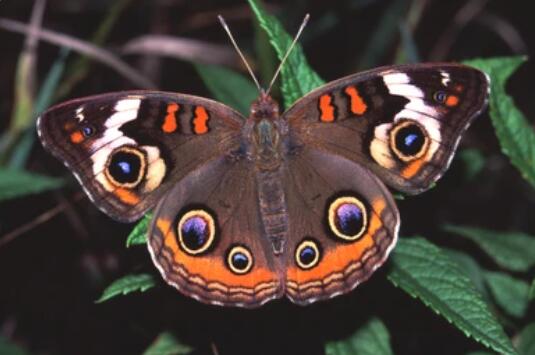Junonia coenia belongs to the family Nymphalidae and has a broad larval diet. Commonly found in cities, suburbs, towns, coastlines, roadsides, fields and meadows, and other open areas. They are sensitive to cold and cannot winter in icy northern areas. The common Junonia coenia is mostly brown with eyespots on the wings. The eyespot pattern found on the wings of butterflies is one of the most striking color patterns in nature, and there is a vast amount of literature on their ecology, evolution, and development.

The forewings and hindwings of Junonia coenia are distinct from each other, and their color patterns and morphology serve a wide range of functions in flight, signaling, and protection. A complex collection of genes may be responsible for this phenomenon, and they interact to form the final pattern. Lifeasible offers Junonia coenia gene editing services based on CRISPR/Cas9 technology to help you explore the wing eyespot's regulation modes.
| Editable genes | Relevant traits exhibited after editing |
| Spalt | This gene has a positive regulatory role in eyespot determination. Deletion of a single gene, spalt, is sufficient to reduce or completely delete the eyespot color pattern. |
| Distal-less (Dll) | This gene has an inhibitory role in eyespot development. Dll gene deletion results in an increase in eyespot size and number. |
| Ultrabithorax (Ubx) | Ubx is the master regulatory gene for hindwing identity in Junonia coenia, including influencing wing morphology, color pattern, and wing vein arrangement and structure. In the Ubx-mutants produced, the hindwing has been transformed into a forewing in some respects. |
| optix | Genetic association of the optix gene with variation in the wing pattern of Junonia coenia. The gene is highly conserved in the family Nymphalidae. Knockout of the optix gene showed complete replacement of colored pigments with melanin and corresponding changes in the expression of pigment-related genes, which allows the production of black and gray Junonia coenia. |
Lifeasible helps you find the essential genes that act as master regulators of butterfly wing color by providing Junonia coenia gene editing services based on CRISPR/Cas9 technology. Please feel free to contact us to customize more editing services for critical genes.